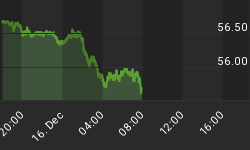The Euro reversed early weakness and finished higher at the close of the New York session. Before the opening traders were looking for the Euro to trade choppy as investors try to balance bearish banking news, U.S. economic data and the outbreak of the Swine Flu.
Overnight the Euro was under pressure as traders were buying the U.S. Dollar for protection following a Wall Street Journal report that the Fed was asking Bank of America and Citigroup to come up with more capital.
The Euro reversed its early bearishness following the release of two better than expected U.S. economic reports. The first friendly report showed U.S. housing prices had fallen at a slower pace than forecast. This led some traders to speculate that the U.S. economy was bottoming. The second report was a greater than expected increase in U.S. Consumer Confidence. This report was most likely a positive response to the rise in the equity markets during April.
The Swine Flu breakout is expected to linger for a while as regulators track the spread of the virus. The economic impact has been minimal so far having been isolated to the travel and leisure industries. Should the spread of the disease worsen, losses could eventually reach a trillion dollars worldwide. This would have a serious effect on global economies and definitely curtail efforts by nations to dig themselves out of the current recession.
The bias is still to the downside as traders can turn risk averse at any time. Traders are also beginning to price in an interest rate cut by the European Central Bank last next week.
British Pounds struggled all morning to hold on to gains following a pair of friendly U.S. economic reports before finishing lower. Both the U.S. Housing Prices report and the U.S. Consumer Confidence report came out better than expected and indicated that the economy may be bottoming. This helped increase trader appetite for risk slightly but the market was not able to hold on to gains.
Short-term the market is feeling pressure from the stronger Dollar due to the flight-to-safety rally caused by the Swine Flu outbreak. Longer-term investors still feel bearish about the British Pound because of the contracting U.K. economy and the widening budget deficit.
Losses seemed to be limited today because the news regarding the Swine Flu remained steady. Any news regarding an acceleration of the disease will be bearish.
Falling commodity prices should continue to have a negative effect on the Canadian Dollar. The sharp rise in key industrial metals such as platinum, copper, zinc and aluminum has helped the Canadian economy recover somewhat recently but traders are beginning to doubt that these gains can be sustained because of the continual slowdown in the U.S. economy.
The outbreak of the Swine Flu is also causing traders to sell higher risk assets like the Canadian Dollar. The economy can suffer if wheat declines because of a drop in demand for livestock. If the disease can be traced to hogs then they may have to be destroyed. This would cause more weakness in the economy.
Although the main fundamentals are beginning to turn bearish for the Canadian Dollar, traders pressured the USD CAD all day following the release of a better than expected U.S. Housing report and a U.S. Consumer Confidence report. This move was likely short-covering. If the Swine Flu outbreak or bad news regarding U.S. banks breaks the equity markets, look for the USD CAD to gain substantially.
The Japanese Yen has been rallying for fourteen days. The rally may have been caused by a reversal of the carry trade as investors hedged their positions against a decline in equity prices. Many investors fear a U.S. financial industry crisis following the release of the preliminary bank stress test reports.
The Japanese economy is still showing signs of weakness. Falling exports are dragging down the economy and are expected to continue as long as demand from the U.S. and Europe remains on a downslide.
Today the USD JPY was able to post a small gain. The rally was triggered by better than expected U.S. housing prices and a slight increase in U.S. Consumer Confidence. Look for the Yen to gain if equity prices continue to drop or if there are problems with U.S. banks.
Traders are mixed about the short-term direction of the Swiss Franc. Risk adverse traders are selling the Swiss Franc for the safety of the U.S. Dollar. U.S. banking issues and the Swine Flu outbreak could keep downside pressure on the Swiss Franc.
The Swiss National Bank is still campaigning for a weaker Franc and remains ready to intervene if necessary. The goal of the SNB is to encourage the exportation of Swiss goods and to prevent the outbreak of deflation.
Losses were limited to the downside because of a friendly U.S. Housing report and a better than expected U.S. Consumer Confidence Report.
















